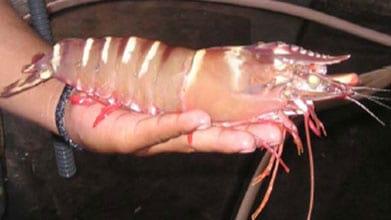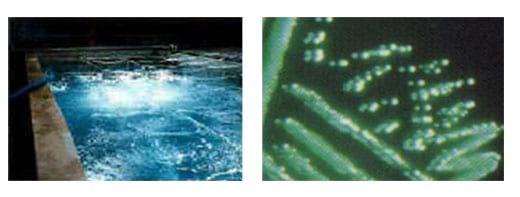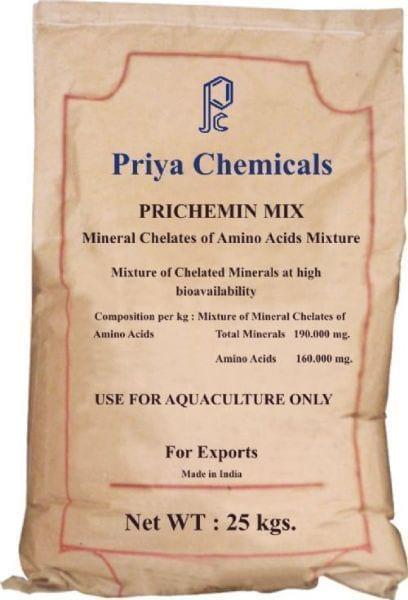Aquaculture is the fastest growing food sector globally and is established itself as high protein resource to fulfill the food demand since the natural resources exhibits over exploitation. But, presently, the biggest problem faced by the aquaculture industry worldwide is diseases caused due to various biological and non-biological agents. Among the groups of microorganisms that cause serious losses in shrimp culture, the best known are bacteria because of the devastating economic effects they have on affected farms. Bacterial diseases, mainly due to Vibrio, have been reported in penaeid shrimp culture systems implicating at least 14 species and they are Vibrio harveyi, V. splendidus, V. parahaemolyticus, V. alginolyticus, V. anguillarum, V. vulnificus, V. campbelli, V. fischeri, V. damsella, V. pelagicus, V. orientalis, V. ordalii, V. mediterrani, V. logei etc.
Vibriosis is one of the major disease problems in shellfish and finfish aquaculture.
Vibriosis is a bacterial disease responsible for mortality of cultured shrimp worldwide (Lightner & Lewis, 1975; Adams, 1991; Lightner et al., 1992; Lavilla-Pitogo et al., 1996; Lavilla-Pitogo et al., 1998; Chen et al., 2000). Vibrio species are widely distributed in culture facilitates throughout the world. Vibrio-related infections frequently occur in hatcheries, but epizootics also commonly occur in pond reared shrimp species. Vibriosis is caused by gram-negative bacteria in the family Vibrionaceae. Outbreaks may occur when environmental factors trigger the rapid multiplication of bacteria already tolerated at low levels within shrimp blood (Sizemore & Davis, 1985), or by bacterial penetration of host barriers. The exoskeleton provides an effective physical barrier to pathogens trying to penetrate the external surface of crustaceans, as well as the foregut and hindgut. However, Vibrio spp. are among the chitinoclastic bacteria associated with shell disease (Cook & Lofton 1973) and may enter through wounds in the exoskeleton or pores (Jiravanichpaisal & Miyazaki, 1994; Alday-Sanz et al,. 2002). The gills may appear susceptible to bacterial penetration because they are covered by a thin exoskeleton (Taylor & Taylor, 1992), but their surfaces are cleaned by the setobranchs (Bauer, 1998). The midgut, composed of the digestive gland (DG) and the midgut trunk (MGT, often referred to as the intestine, see Lovett & Felder, 1990), is not lined by an exoskeleton and therefore seems to be a likely site for penetration of pathogens carried in the water, food and sediment (Ruby et al., 1980; Jayabalan et al., 1982).
Vibrio harveyi, a gram-negative, luminous bacterium, is one of the important etiologic agents of mass mortalities of Penaeus monodon larval rearing systems. A large number of shrimp hatcheries (over 280) along the coastline of our country involved in shrimp seed production often suffer setbacks due to luminescent bacterial disease and suffer enormous economic losses.
Among the Vibrio harveyi isolates, some are virulent and some are not, suggesting a great deal of molecular and genetic variation in this group of bacteria. The pathogenic mechanism has also been recently attributed to bacteriophage.
Vibriosis is ubiquitous throughout the world and all marine crustaceans, including shrimps, are susceptible. Epizootics occur in all life stages, but are more common in hatcheries. Major epizootics of vibriosis have been reported for P. monodon from the Indo-Pacific region, P. japonicus from Japan, and P. vannamei from Ecuador, Peru, Colombia and Central America (Lightner, 1996). Vibriosis is expressed by way of number of syndromes. These include: oral and enteric vibriosis, appendage and cuticular vibriosis, localised vibriosis of wounds, shell disease, systemic vibriosis and septic hepatopancreatitis (Lightner, 1996).
Vibriosis is caused by a number of Vibrio species of bacteria, including: V. harveyi, V. vulnificus, V. parahaemolyticus, V. alginolyticus, V. penaeicida (Brock and Lightner, 1990; Ishimaru et al., 1995). There have been occasional reports of vibriosis caused by V. damsela, V. fluvialis and other undefined Vibrio species (Lightner, 1996).

Vibrio species are part of the natural microflora of wild and cultured shrimps (Sinderman, 1990) and become opportunistic pathogens when natural defence mechanisms are suppressed (Brock and Lightner, 1990). They are usually associated with multiple etiological agents. However, some Vibrio species, or strains of certain species, have been identified as primary pathogens (Owens and Hall-Mendelin, 1989; Owens et al, 1992; Lavilla-Pitogo et al., 1990; de la Peña a et al., 1995). Pathogenic strains of V. harveyi, V. vulnificus and V. parahaemolyticus have caused massive epidemics in Thailand (Nash et al., 1992) and the Philippines (Lavilla-Pitogo et al., 1990). Luminescent V. harveyi appears to release exotoxins (Liu et al., 1996) and may cause 80-100% mortality in P. monodon hatcheries (Harris, 1995). V. anguillarum, V. campbelli, V. nereis, V. cholerae (non 01) and V. splendidus have also been reported in association with disease outbreaks in shrimps (Chen 1992; Lavilla-Pitoga, 1990; Esteve & Quijada, 1993; Sahul-Hameed et al., 1996). The relationship between luminescence and toxicity of Vibrio carchariae in shrimp was investigated by Tatsuya Nakayama et al (2005).
According to Jayasree. L. et al (2006) occurrence of five types of diseases: tail necrosis, shell disease, red disease, loose shell syndrome (LSS) and white gut disease (WGD) is by Vibrio spp. in Penaeus monodon from culture ponds of coastal Andhra Pradesh. Among these, LSS, WGD, and red disease caused mass mortalities in shrimp culture ponds. Six species of Vibrio-V. harveyi, V. parahaemolyticus, V. alginolyticus, V. anguillarum, V. vulnificus and V. splendidus-are associated with the diseased shrimp. The distribution and species composition of luminous bacteria in commercial penaeid shrimp hatcheries were studied by Jawahar Abraham. T and R. Palaniappan (2004). Theobservation on the presence of V. harveyi (97.30%) and V. orientalis (2.70%) in shrimp gut contents evinced that the primary source of these bacteria in a shrimp hatchery was the faecal matter from brood stock, possibly at the time of spawning.
Clinical signs
Mortalities due to vibriosis occur when shrimps are stressed by factors such as: poor water quality, crowding, high water temperature, low DO and low water exchange (Lewis, 1973; Lightner and Lewis, 1975; Brock and Lightner, 1990). High mortalities usually occur in postlarvae and young juvenile shrimps. P. monodon larvae suffered mortalities within 48 hr of immersion challenge with strains of V. harveyi and V. splendidus (Lavilla-Pitogo, et al., 1990). Mortalities involving vibriosis have been reported in market sized P. monodon (Anderson et al., 1988). Adult shrimps suffering vibriosis may appear hypoxic, show reddening of the body with red to brown gills, reduce feeding and may be observed swimming lethargically at the edges and surface of ponds (Anderson et al., 1988; Nash et al., 1992). Vibrio spp. also cause red-leg disease, characterised by red colouration of the pleopods, periopods and gills, in juvenile to adult shrimps and may cause mortality of up to 95% during the warm season (Chen, 1992). Eyeball necrosis diseases is caused by V. cholerae. The eyeballs of infected shrimps turn brown and fall away and mortality occurs within a few days (Chen, 1992).
Six Vibrio species, including V. harveyi and V. splendidus cause luminescence, which is readily visible at night, in infected postlarvae, juveniles and adults (Ruby et al., 1980; Lightner, et al., 1992). Infected postlarvae may also exhibit reduced motility, reduced phototaxis and empty guts (Chen, 1992).
Gross Pathology
Shrimps suffering vibriosis may display localised lesions of the cuticle typical of bacterial shell disease, localised infections from puncture wounds, loss of limbs, cloudy musculature, localised infection of the gut or hepatopancreas and/or general septicemia (Lightner, 1993). Lesions of bacterial shell disease are brown or black and appear on the body cuticle, appendages or gills (Sinderman, 1990).
Affected postlarvae may display cloudy hepatopancreata (Takahashi et al., 1985). Gills often appear brown (Anderson et al., 1988). Septic hepatopancreatitis is characterised by atrophy of the hepatopancreas with multifocal necrosis and haemocytic inflammation.
Containing high loads of either Vibrio parahaemolyticus or V. harveyi induced the rounding up and detachment of epithelial cells from the basal lamina of the MGT. Epithelial cell detachment was not seen in the presence of non-pathogenic bacteria (probiotics) (Chen et al. 2000, Gary G. Martin et al. 2004).
Pathogens like Vibrio spp., which cause detachment of the epithelium in the MGT, can affect high mortality in shrimpby eliminating 2 layers that protect the shrimp from infections: the epithelium and the peritrophic membrane it secretes. In addition, loss of the epithelium may affect the regulation of water and ion uptake into the body (Mykles 1977, Neufeld & Cameron 1994).
Histopathology
Systemic vibriosis typically results in the formation of septic haemocytic nodules in the lymphoid organ, heart and connective tissues of the gills, hepatopancreas, antennal gland, nerve cord, telson and muscle (Anderson et al., 1988; Mohney et al., 1991; Jiravanichpaisal et al., 1994). Infected hepatopancreocytes may appear poorly vacuolated, indicating low lipid and glycogen reserves (Anderson et al., 1988). Vibriosis in P. monodon is associated with the formation of "spheroids" in the lymphoid organ (Nash et al., 1992).
Diagnosis
Diagnosis of vibrio infection is based on clinical signs and the histological demonstration of rod-shaped Vibrio bacteria in lesions, nodules or haemolymph. Excised organs and haemolymph may be streaked on a Vibrio-selective (TCBS) or general marine agar plate. When investigating postlarvae, the whole animal may be crushed and then streaked onto an agar plate. Luminescent colonies may be observed after 12 to18 hr if incubated at room temperature or 25 to 30oC.
Luminescent bacteria (Vibrio harveyi)

Vibrio isolates may be identified by a number of methods, including: Gram stain, motility, an oxidase test, mode of glucose utilisation, growth in the presence of NaCl, nitrate reduction and luminescence. Vibrio species may be identified rapidly in the field using the API-20 NFT system which involves culturing vibrio colonies on API-NFT strips and scoring the colonies according to the kit directions (Lightner, 1996) or BIOLOG (a miniaturised bacterial identification system which is an alternative to the API system). Antimicrobial sensitivity tests may be used to identify vibriosis and can be run using the Kirby-Bauer disk method (DIFCO, 1986) or the Minimum Inhibitory Concentration (MIC) method (Lightner, 1996)
Transmission
Vibrio species exist in the water used in shrimp culture facilities (Lavilla-Pitogo, et al., 1990) and the biofilm, which is formed on different water contact structures of hatcheries and farms. Bacteria enter shrimps via wounds or cracks in the cuticle and are ingested with food (Paynter 1989; Lavilla-Pitogo et al., 1990). The primary source of V. harveyi in hatcheries appears to be the midgut contents of female broodstock, which are shed during spawning (Lavilla-Pitogo et al., 1992).
Viability
Numerous studies have been undertaken concerning the effect of freezing on vibrios which contaminate harvested shellfish. V. vulnificus in harvested oysters (Crassostrea virginica) survived storage at -20 oC for 70 days (Parker et al., 1994). V. parahaemolyticus, isolated from homogenates of oyster meat was inactivated within 16 days at -15 oC when the bacterial load was very high (10 cfu/gm; Muntada-Garriga et al., 1995). There is recent evidence to suggest that V. harveyi can survive in pond sediment even after chlorination or treatment with lime (Karunasagar et al., 1996).
Present status of vibriosis
Vibriosis is a common problem world-wide, particularly in India. V. harveyi continues to cause chronic mortalities of up to 30% among P. monodon larvae, postlarvae and adult under stressful conditions. A highly pathogenic strain of Vibrio sp. are also emerging and continues to cause mortalities among cultured shrimp (Le Groumellec et al., 1996). Problems caused by secondary vibriosis are common, but are considered minor compared to viral epidemics.
Treatment
Vibriosis is controlled by rigorous water management and sanitation to prevent the entry of vibrios in the culture water (Baticados, et al., 1990) and to reduce stress on the shrimps (Lightner, 1993). Good site selection, pond design and pond preparation are also important (Nash et al., 1992). An increase in daily water exchanges and a reduction in pond biomass by partial harvesting are recommended to reduce mortalities caused by vibriosis. Draining, drying and administering lime/dolomite to ponds following harvest is also recommended (Anderson et al., 1988).
Luminescent vibriosis may be controlled in the hatchery by washing eggs with iodine (SparkDin) and formaldehyde and avoiding contamination by spawner faeces. V. harveyiin the water column can be inactivated by Chlorine Dioxide (KloSant). Probiotics (UltraZyme-P-FS and BioRemid-Aqua) are administered directly into the water or via feeds. Immunostimulants (ImmunoMax-FS) have had success in reducing shrimp mortalities associated with vibriosis. Jiravanichpaisal and Chuaychuwong et al (1997) reported the use ofLactobacillus sp. as the probiotic bacteria in the giant tiger shrimp (P.monodon). They designed to investigate an effective treatment of Lactobacillus sp. against vibriosis and white spot diseases in P. monodon. They investigated the growth of some probiotic bacteria, and their survival in the 20 ppt sea water for at least 7 days. Inhibiting activity of two Lactobacillus sp. against Vibrio sp., E. coli, Staphylococcus sp. was determined.
The effect of copper concentration on the expression of both luminescence and toxin of V. harveyi was investigated by Nakayama. T. et al (2007). They found copper concentration (non-antibiotic substance) of less than 40 ppm had no effect on the growth of shrimp. While V. harveyi cultured with 40 ppm copper concentration showed decreased luminescence. Therefore, the combination of prebiotics, probiotics, immuno-stimulants and non-antibiotic substances (LBeeNex) has superior specificity against vibriosis and Luminescent Bacteria (LB) coupled with Best Aquaculture Practices (BAP), which makes it an effective management tool for the control of luminescence bacterial toxicity in aquaculture.
References
Adams, A. 1991. Response of penaeid shrimp to exposure to Vibrio species. Fish Shellfish Immunol 1:59-70.
Alday-Sanz. V., Roque, A., Turnbull, JF. 2002. Clearing mechanisms of Vibrio vulnificus biotype I in the black tiger shrimp Penaeus monodon. Dis Aquat Org 48:91-99.
Anderson, I.G., Shamsudin, M.N. and Shariff, M. 1988. Bacterial septicemia in juvenile tiger shrimp, Penaeus monodon, cultured in Malaysian brackishwater ponds. Asian Fis.Sci. 2: 93-108.
Baticados, M.C.L., Lavilla-Pitogo, C.R., Cruz-Lacierda, E.R., de la Pena, L.D. and Sunaz, N.A. 1990. Studies on the chemical control of luminous bacteria Vibrio harveyi and V splendidus isolated from diseased Penaeus monodon larvae and rearing water. Dis. Aquat. Org. 9: 133-139.
Bauer, RT. 1998 Gill-cleaning mechanisms of the crayfish Procambarus clarkii (Astacidea: Cambaridae): experimental testing of setobranch function. Invertebr Biol 117: 129-143.
Brock, J.A. and Lightner, D.V. 1990. Chapter 3: Diseases of Crustacea. In: O. Kinne (ed.) Diseases of Marine Animals Vol. 3, Biologische Anstalt Helgoland, Hamburg. pp. 245-424.
Chen, D. 1992. An overview of the disease situation, diagnostic techniques, treatments and preventatives used on shrimp farms in China. In: W. Fuls and K.L.Main (eds.) Diseases of Cultured Penaeid Shrimp in Asia and the Unites States. The Oceanic Institute, Hawaii. pp. 47-55.
Chen, FR., Liu, PC., Lee, KK. 2000. Lethal attribute of serine protease secreted by Vibrio alginolyticus strains in Kurama Prawn Penaeus japonicus. Zool Naturforsch 55:94-99.
Cook, DW., Lofton, SR. 1973. Chitinoclastic bacteria associated with shell disease in Penaeus shrimp and the blue crab. J Wild Dis 9:154-159.
de la Peña, L.D., Kakai, T., Muroga, K. 1995. Dynamics of Vibrio sp PJ in organs of orally infected kuruma shrimp, Penaeus japonicus. Fish. Pathol. 30: 39-45.
Esteve, M. and Quijada, R. 1993. Evaluation of three experimental infection techniques with Vibrio anguillarum in Penaeus brasiliensis in Carillo et al., (ed.).,"From discovery to commercialization" ''''93 World Aquaculture, European Aquaculture Society Special publication #19 Torremolinos, Spain p 129.
Gary G. Martin, Nicole Rubin, Erica Swanson 2004. Vibrio parahaemolyticus and V. harveyi cause detachment of the epithelium from the midgut trunk of the penaeid shrimp Sicyonia ingenti. Diseases of Aquatic Organisms. Vol. 60: 21-29.
Harris, L. 1995. The involvement of toxins in the virulence of Vibrio harveyi strains pathogenic to the black tiger shrimp Penaeus monodon and the use of commercial probiotics to reduce shrimp hatchery disease outbreaks caused by V. harveyi strains. CRC for Aquaculture, Scientific Conference abstract, Bribie Island, Australia.
Itami, T., Takahashi, Y. and Nakamura, Y. 1989. Efficiency of vaccination against vibriosis in cultured kuruma shrimps Penaeus japonicus. J. Aquatic Anim. Health 1: 238-242.
Ishimaru, K., Akarawa-Matsushita, M., Muroga, K. 1995. Vibrio penaeicida sp., nov., a pathogen of kuruma shrimps (Penaeus japonicus). Int. J. Syst. Bacteriol. 43: 8-19.
Itami, T. 1996. Vaccination and immunostimulation in shrimps. SICCPPS book of abstracts, SEAFDEC, Iloilo City, Philippines. p. 50.
Jawahar Abraham. T and R. Palaniappan (2004). Distribution of luminous bacteria in semi-intensive penaeid shrimp hatcheries of Tamil Nadu, India. Aquaculture, Vol. 232, Issues 1-4, Pages 81-90.
Jayabalan, N., Chandran, R., Sivakumar, V., Ramamoorthi, K. 1982. Occurrence of luminescent bacteria in sediment. Curr Sci 51:710-711.
Jayasree, L.,1 Corresponding author.aDepartment of Zoology, Andhra University, Visakhapatnam, Andhra Pradesh 530003 India Janakiram, P and Madhavi, R. 2006. Characterization of Vibrio spp. Associated with Diseased Shrimp from Culture Ponds of Andhra Pradesh (India). Journal of the World Aquaculture Society, Volume 37 Issue 4 Page 523.
Jiravanichpaisal, P and Miyazaki, T. 1994. Histopathology, biochemistry and pathogenicity of Vibrio harveyi infecting black tiger shrimp Penaeus monodon. J. Aquat. An. Health 6: 27-35.
Jiravanichpaisal and Chuaychuwong et al.1997. The use of Lactobacillus p. as treatment of vibriosis in Penaeus monodon (giant tiger shrimp). J. Aq., 151
Karunasagar, I., Otta, S.K. and Karunasagar, I. 1996. Effect of chlorination on shrimp pathogenic Vibrio harveyi. World Aquaculture ''''96, book of abstracts. The World Aquaculture Society, Baton Rouge, LA. p. 193.
Lavilla-Pitogo, C.R., Baticados, C.L., Cruz-Lacierda, E.R. and de la Pena, L. 1990. Occurrence of luminous bacteria disease of Penaeus monodon larvae in the Philippines. Aquaculture 91: 1-13.
Lavilla-Pitogo, C.R., Albright, L.J., Paner, M.G. and Sunaz, N.A. 1992. Studies on the sources of luminescent Vibrio harveyi in Penaeus monodon hatcheries. In: M. Shariff,R.P. Subasinghe and J.R. Authur (eds.) Diseases in Asian Aquaculture 1. Fish Health Section, Asian Fisheries Society, Manila, Philippines. pp. 157-164.
Lavilla-Pitogo, C.R., Leano, E.M. and Paner, M.G. 1996. Mortalities of pond-cultured juvenile shrimp, Penaeus monodon, associated with dominance of luminescent bacteria, Vibrio harveyi in the rearing environment. SICCPPS book of abstracts, SEAFDEC, Iloilo City, Philippines. p. 40.
Lavilla-Pitogo, CR., Leano, EM., Paner, MG. 1998. Mortalities of pond-cultured juvenile shrimp Penaeus monodon associated with dominance of luminescent vibrios in the rearing environment. Aquaculture 164:337-349.
Le Groumellec, M., Goarant, C., Haffner, P., Berthe, F., Costa, R. and Mermoud, I. 1996. Syndrome 93 in New Caledonia: Investigation of the bacterial hypothesis by experimental infections, with reference to stress-induced mortality. SICCPPS book of abstracts, SEAFDEC, Iloilo City, Philippines. p. 46.
Lewis, D.H. 1973. Response of brown shrimp to infection with Vibrio sp. Proc. Wld. Maricult. Soc. 4: 333-338.
Lightner, D.V. 1993. Diseases of cultured penaeid shrimp. In: J.P. McVey (ed.) CRC Handbook of Mariculture, Second edition, Volume 1, Crustacean Aquaculture. CRC Press Inc., Boca Raton, FL. p. 393-486.
Lightner, D.V. (ed.). 1996. A Handbook of Shrimp Pathology and Diagnostic Procedures for Diseases of Cultured Penaeid Shrimp. World Aquaculture Society, Baton Rouge, LA, USA.
Lightner, D.V. and Lewis, D.H. 1975. A septicemic bacterial disease syndrome of penaeid shrimp. Mar. Fish. Rev. 37(5-6): 25-28.
Lightner, D.V., Bell, T.A., Redman, R.M., Mohney, L.L., Natividad, J.M., Rukyani, A. and Poernomo, A. 1992. A review of some major diseases of economic significance in penaeid shrimps/shrimps of the Americas and Indo-Pacific. In: M. Shariff, R. Subasinghe and J.R. Arthur (eds.) Proceedings 1st Symposium on Diseases in Asian Aquaculture. Fish Health Section, Asian Fisheries Society, Manila, Philippines. pp. 57-80.
Liu, P.C., Lee, K.K. and Chen, S.N. 1996. Pathogenicity of different isolates of Vibrio harveyi in tiger shrimp, Penaeus monodon. Letters in Applied Microbiology 22: 413-416.
Lovett, DL., Felder, DL. 1990. Ontogenetic changes in enzyme distribution and midgut function in developmental stages of Penaeus setiferus (Crustacea, Decapoda, Penaeidae). Biol Bull (Woods Hole) 178:164-174.
Mohney, L.L. and Lightner, D.V. 1990. Bioencapsulation of therapeutic quantities of the antibacterial Pomet 30 in the nematode Panagrellas redivivus and in nauplii of Artemia salina. J. World. Aquacult. Soc. 21(3): 186-191.
Muntada-Garriga, J.M., Rodriguez-Jerez, J.J., Lopez-Sabater, E.I. and Mora-Ventura, M.T. 1995. Effect of chill and freezing temperatures on survival of V. parahaemolyticus inoculated in homogenates of oyster meat. Letters in Applied Microbiology 20: 225-227.
Mykles DL (1977) The ultrastructure of the posterior midgut caecum of Pachygrapsus crassipies (Decapoda, Brachyura) adapted to low salinity. Tissue Cell 9:681-691
Nakayama T, N. Nomura, M. Matsumura. 2007. The effect of copper concentration on the virulence of pathogenic Vibrio harveyi, Journal of Applied Microbiology 102 (5), 1300-1306.
Nash, G. Nithimathachoke, C., Tungmandi, C., Arkarjamorn, A., Prathanpipat, P. and Ruamthaveesub, P. 1992. Vibriosis and its control in pond-reared Penaeus monodon in Thailand. In: M. Shariff, R.P. Subasinghe and J.R. Authur (eds.) Diseases in Asian Aquaculture 1. Fish Health Section, Asian Fisheries Society, Manila, Philippines. pp. 143-155.
Neufeld DS, Cameron JN (1994) Mechanism of the net uptake of water in moulting blue crags (Callinectes sapidus) acclimated to high and low salinities. J Exp Biol 188:11-23
Owens, L. and Hall-Mendelin, 1989. Recent Advances in Australian shrimps (sic) diseases and pathology. Advances in Tropical Aquaculture, Tahiti, AQUACOP, IFREMER, Actes de Colloque 9: 103-112.
Owens, L., Muir, P., Sutton, D. and Wingfield, M. 1992. The pathology of microbial diseases in tropical Australian Crustacea. In: M. Shariff, R.P. Subasinghe and J.R. Authur (eds.) Diseases in Asian Aquaculture 1. Fish Health Section, Asian Fisheries Society, Manila, Philippines. pp. 165-172.
Parker, R.W., Maurer, E.M., Childers, A.B. and Lewis, D.H. 1994. Effect of frozen storage and vacuum packing on survival of V. vulnificus in Gulf Coast Oysters (C.virginica). J. Food Protection 57(7): 604-606.
Paynter, J.L. 1989. Invertebrates in Aquaculture. Refresher Course for Veterinarians, Proceedings 117. The University of Queensland.
Pizzutto, M and Hirst, R.G. 1995. Classification of isolates of Vibrio harveyi virulent to Penaeus monodon larvae by protein profile analysis and M13 DNA fingerprinting. Dis. Aquat. Org. 21: 61-68.
Ruby, E.G., Greenberg, E.P. and Hastings, J.W. 1980. Planktonic marine luminous bacteria: species distribution in the water column. Applied and Environmental Microbiology 39: 302-306.
Sahul Hameed, A.S., Rao, P.V., Farmer, J.J., Hickman-Brenner, W. and Fanning, G.R. 1996. Characteristics and pathogenicity of a Vibrio cambelli-like bacterium affecting hatchery-reared Penaeus indicus (Milne Edwards, 1837) larvae. Aquacult. Res. 27, 853-863.
Sindermann, C.J. 1990. Principal Diseases of Marine Fish and Shellfish, Vol. 2, 2nd edition. Academic Press, New York.
Sizemore RK, Davis JW (1985) Source of Vibrio spp. found in the hemolymph of the blue crab Callinectes sapidus. J Invertebr Pathol 46:109-110.
Takahashi, Y. Shimoyama, Y and Monoyama, K. 1985. Pathogenicity and characteristics of Vibrio sp. isolated from diseased postlarvae of kuruma shrimp, Penaeus japonicus Bate. Bull. Jpn. Soc. Sci. Fish. 51: 721-730.
Tatsuya Nakayama1Graduate School of Life and Environmental Sciences, University of Tsukuba, Tsukuba, Ibaraki 305-8572, Japan, Nakao Nomura and1Graduate School of Life and Environmental Sciences, University of Tsukuba, Tsukuba, Ibaraki 305-8572, Japan Masatoshi Matsumura, 2005. Analysis of the relationship between luminescence and toxicity of Vibrio carchariae pathogenic to shrimp. Fisheries Science, Volume 71 Issue 6 Page 1236.
Taylor HH, Taylor EW (1992) Gills and lungs: the exchange of gases and ions. In: Harrison FW, Humes AG (eds) Microscopic anatomy of invertebrates 10. Wiley-Liss, New York, p 203-293.















